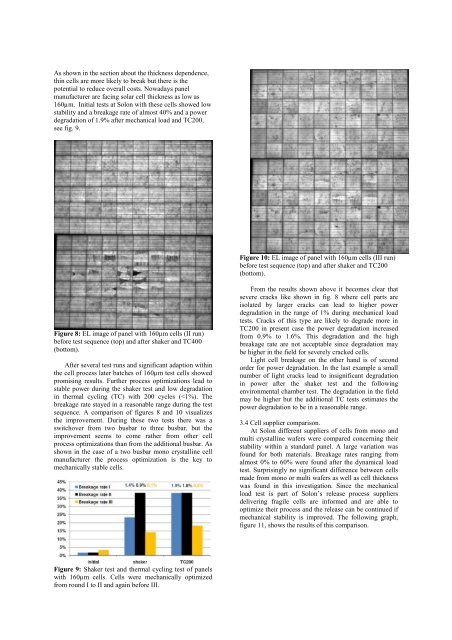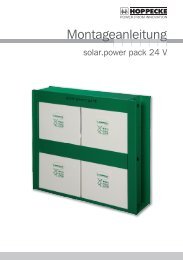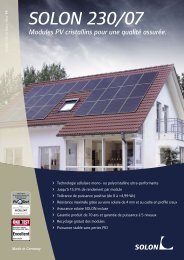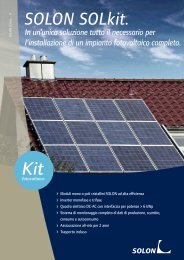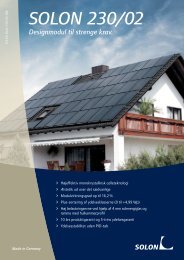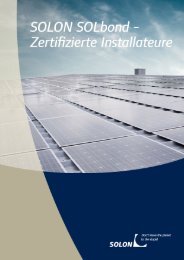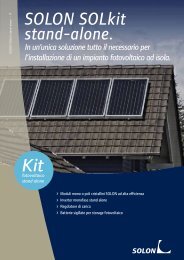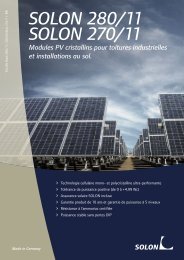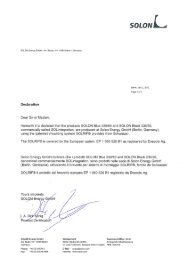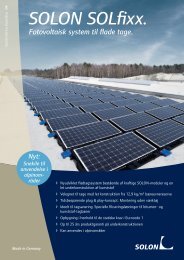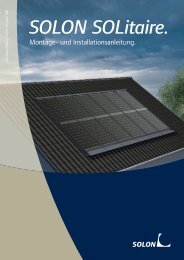mechanical stability of solar cells within solar panels - Solon
mechanical stability of solar cells within solar panels - Solon
mechanical stability of solar cells within solar panels - Solon
You also want an ePaper? Increase the reach of your titles
YUMPU automatically turns print PDFs into web optimized ePapers that Google loves.
As shown in the section about the thickness dependence,<br />
thin <strong>cells</strong> are more likely to break but there is the<br />
potential to reduce overall costs. Nowadays panel<br />
manufacturer are facing <strong>solar</strong> cell thickness as low as<br />
160µm. Initial tests at <strong>Solon</strong> with these <strong>cells</strong> showed low<br />
<strong>stability</strong> and a breakage rate <strong>of</strong> almost 40% and a power<br />
degradation <strong>of</strong> 1.9% after <strong>mechanical</strong> load and TC200,<br />
see fig. 9.<br />
Figure 8: EL image <strong>of</strong> panel with 160µm <strong>cells</strong> (II run)<br />
before test sequence (top) and after shaker and TC400<br />
(bottom).<br />
After several test runs and significant adaption <strong>within</strong><br />
the cell process later batches <strong>of</strong> 160µm test <strong>cells</strong> showed<br />
promising results. Further process optimizations lead to<br />
stable power during the shaker test and low degradation<br />
in thermal cycling (TC) with 200 cycles (


